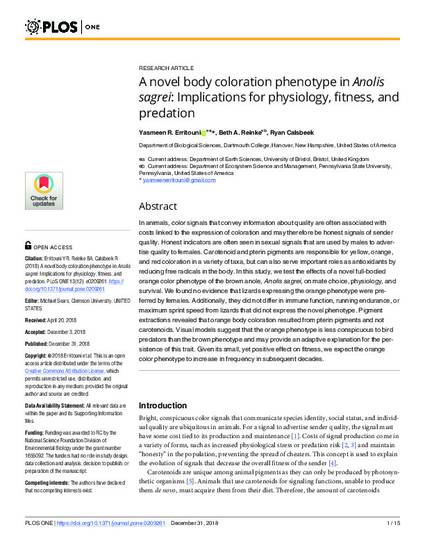
Article
A novel body coloration phenotype in Anolis sagrei: Implications for physiology, fitness, and predation
PloS ONE
(2018)
Abstract
In animals, color signals that convey information about quality are often associated with costs linked to the expression of coloration and may therefore be honest signals of sender quality. Honest indicators are often seen in sexual signals that are used by males to advertise quality to females. Carotenoid and pterin pigments are responsible for yellow, orange, and red coloration in a variety of taxa, but can also serve important roles as antioxidants by reducing free radicals in the body. In this study, we test the effects of a novel full-bodied orange color phenotype of the brown anole, Anolis sagrei, on mate choice, physiology, and survival. We found no evidence that lizards expressing the orange phenotype were preferred by females. Additionally, they did not differ in immune function, running endurance, or maximum sprint speed from lizards that did not express the novel phenotype. Pigment extractions revealed that orange body coloration resulted from pterin pigments and not carotenoids. Visual models suggest that the orange phenotype is less conspicuous to bird predators than the brown phenotype and may provide an adaptive explanation for the persistence of this trait. Given its small, yet positive effect on fitness, we expect the orange color phenotype to increase in frequency in subsequent decades.
Keywords
- Anolis,
- color,
- fitness,
- evolution
Disciplines
Publication Date
Winter December 31, 2018
Citation Information
Yasmeen Erritouni, Beth Reinke and Ryan Calsbeek. "A novel body coloration phenotype in Anolis sagrei: Implications for physiology, fitness, and predation" PloS ONE Vol. 12 Iss. 13 (2018) Available at: http://works.bepress.com/beth-reinke/1/
